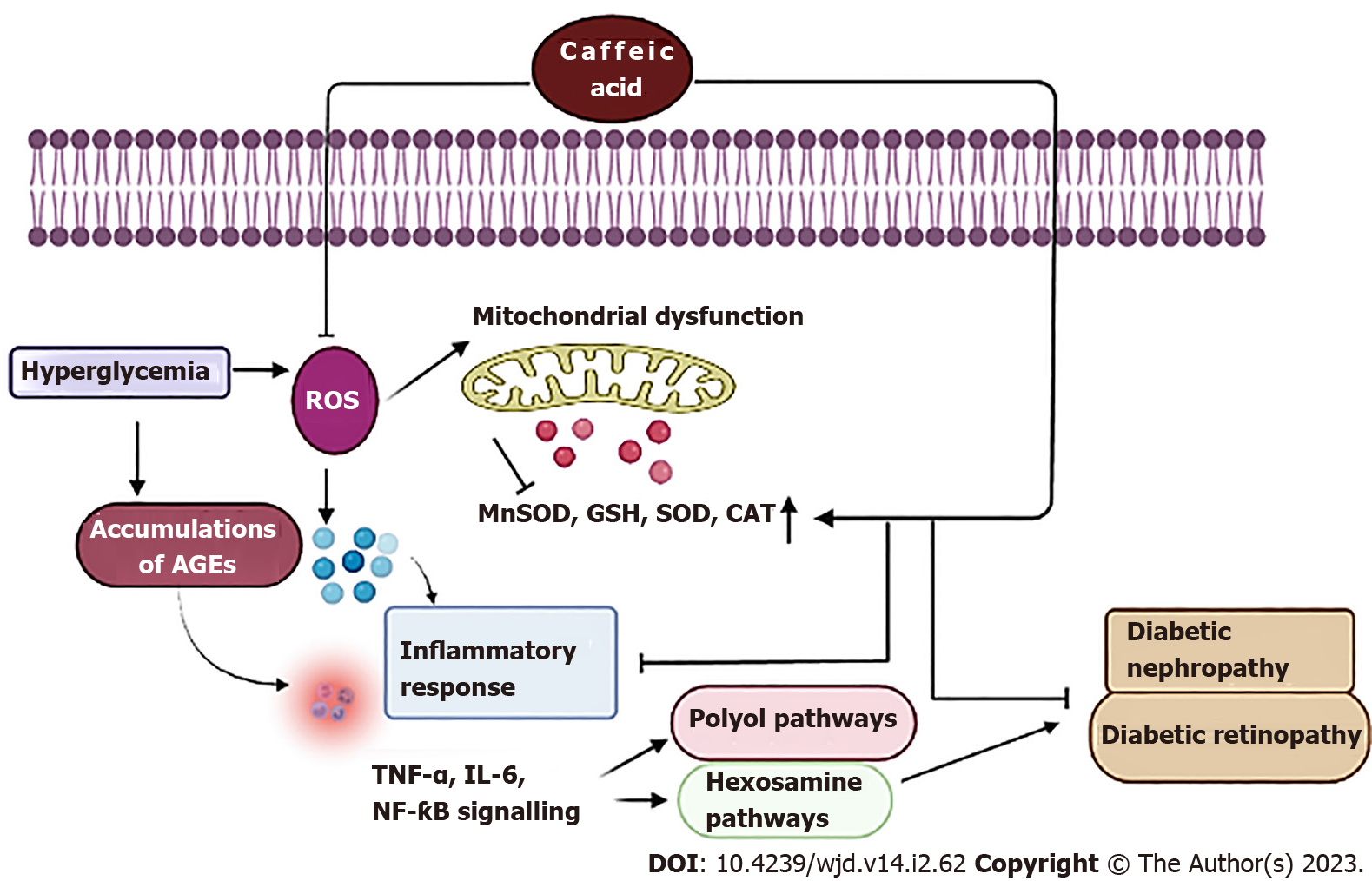Copyright
©The Author(s) 2023.
World J Diabetes. Feb 15, 2023; 14(2): 62-75
Published online Feb 15, 2023. doi: 10.4239/wjd.v14.i2.62
Published online Feb 15, 2023. doi: 10.4239/wjd.v14.i2.62
Figure 4 echanism of protective action of caffeic acid in diabetic nephropathy and retinopathy.
Hyperglycemia induces formation of advanced glycation end products and reactive oxygen species in renal and retinal tissues, which in turn causes mitochondrial dysfunction by inhibiting antioxidant enzymes such as manganese superoxide dismutase, glutathione peroxidase, catalase, and activates the production of inflammatory cytokines like tumor necrosis factor-α, interleukin-6, nuclear factor-κB, polyol, and hexosamine signaling pathways. Caffeic acid increases the levels of antioxidant enzymes and suppresses inflammatory response, thus protecting the tissues from diabetic nephropathy and retinopathy. AGEs: Advanced glycation end products; ROS: Reactive oxygen species; Mn-SOD: Manganese superoxide dismutase; CAT: Catalase; SOD:Superoxide dismutase; GSH: Glutathione; NF-κB: Nuclear factor-κB; IL-6: Interleukin-6; TNF-α: Tumor necrosis factor-α.
- Citation: Ganguly R, Singh SV, Jaiswal K, Kumar R, Pandey AK. Modulatory effect of caffeic acid in alleviating diabetes and associated complications. World J Diabetes 2023; 14(2): 62-75
- URL: https://www.wjgnet.com/1948-9358/full/v14/i2/62.htm
- DOI: https://dx.doi.org/10.4239/wjd.v14.i2.62









